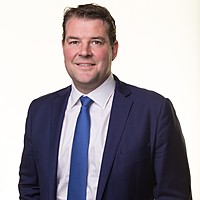The increase in the global cost of capital to bite
The US Federal Reserve raised interest rates by 0.25% as expected to the upper band target of 1.75%, 0.25% higher than that of the RBA cash rate. The Fed rationalised the increase noting the strengthening of the economic outlook in recent months.
Chairman Powell repeated time and time again that only a single committee decision was made today in raising interest rates by 0.25% and nothing more. He did not filibuster the answers and repeatedly said the longer term dots are not that important, whilst also openly admitting that forecasting two or three years into the future is very difficult.
Despite making such a statement by 2020, the FOMC sees little change in employment, inflation or growth but expects to raise rates another six times and reduce their balance sheet by $1 trillion dollars.
JCB would ask the following question:
Can the US raise rates by a similar amount to the GFC on twice the debt burden and still assume that employment, growth and inflation will remain unchanged? JCB believes this is a very tall assumption to make and hence, would recommend caution to anyone assuming the same.
We believe that markets should consider the cumulative effects of each additional rate hike (particularly given monetary policy operates with a noted lag) before making predictions two or three years into the future. If inflation doesn’t show up, we are putting the brakes on the economy.
The GFC was caused by the world’s largest ever debt burdens, having funding markets seize, during a period of US interest rate hikes from 2004 to 2006 of 4.25%. In response to the GFC, the debt burdens have been essentially doubled in size, except much of this newly minted debt has been created at zero interest rate policy.
Australia and the US decoupling: Australia unlikely to get back in front of the US Fed anytime soon.
JCB’s expectation is that the RBA remains firmly on hold in 2018 whilst the US Federal Reserve continues to lift interest rates, as we have previously talked about. We expect this interest rate decoupling to continue and as a result, foresee pressure to build on the AUD currency over the coming year.
The huge fiscal expansion in the US (despite being in the tenth year of recovery) has forced US bond yields higher, due to the growth in US bond supply. This has taken Australian interest rates below that of the US across all key maturity points on term structure curves for the first time since 2000. The continued de-coupling of US and Australian interest rates reflects the vastly differing economic outlooks and budgetary positions between the two nations.
For context, to get back in front of the US Fed, the RBA would need the equivalent of six or seven rate hikes. To increase rates that dramatically, on the second-largest household debt burden in the world, would have a material impact on households, corporates and the economy, in our opinion.
Interestingly the last time these yield differentials were negative, the AUD was around 0.50 cents to a USD, rather than today’s 0.78 cents. That is a huge chasm between the two in a relatively low interest rate world.
Implications for Australia
For investors, JCB believes given the above backdrop, that now is the time investors should be looking under the bonnet and assessing the risk and concentration across portfolios. Every asset class has enjoyed a tremendous period of capital growth since the GFC as a result of record low costs of capital. With the global cost of capital increasing, along with the de-coupling of economies, currencies, interest rates and correlations, prudent defensive portfolio allocation has never been more important.
Most investors should know that the Australian banks and corporates have enjoyed incredibly cheap cost of capital from offshore since the GFC. Most recently, we have seen some of the major Australian banks increase their mortgage lending rates (out of cycle), as the international cost of capital increases. With data velocity in Australia continually illustrating less than inspiring forward looking estimates, the funding pressures for households remain incredibly sensitive.
8 topics

